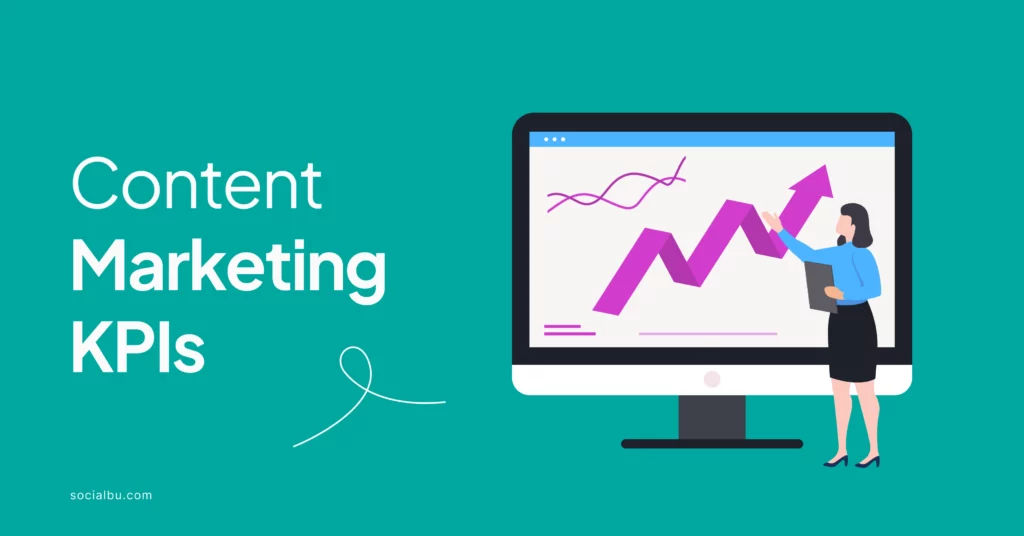Today, content marketing reigns supreme. But how do you know if your content is truly hitting the mark? Tracking the right content marketing KPIs (key performance indicators) is crucial for measuring success and optimizing your strategy.
This guide will discuss the top 9 KPIs you must monitor. Understanding these metrics will give you powerful insights into refining your content and achieving your marketing goals.
Let’s explore these essential KPIs and unlock the full potential of your content marketing efforts.
The Evolving Content Marketing Landscape
The world of content marketing is constantly changing and developing. New trends and technologies are emerging, forcing marketers to adapt their strategies and the content marketing KPIs they track.
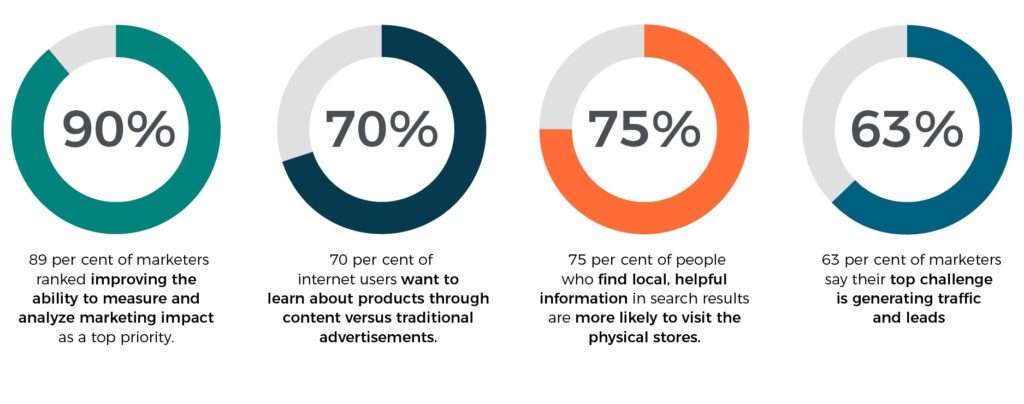
Here’s a closer look at some key changes impacting our approach to content marketing metrics in 2024:
Focus on Quality over Quantity
Gone are the days of creating low-quality content to boost website traffic. Today’s audiences crave valuable, informative, engaging content that solves their problems. This shift necessitates tracking KPIs that measure engagement and user experience, not just raw traffic numbers.
The Rise of Interactive Content
Interactive elements like quizzes, polls, and surveys are becoming increasingly popular. These elements boost engagement and provide valuable data about your audience’s preferences and interests.
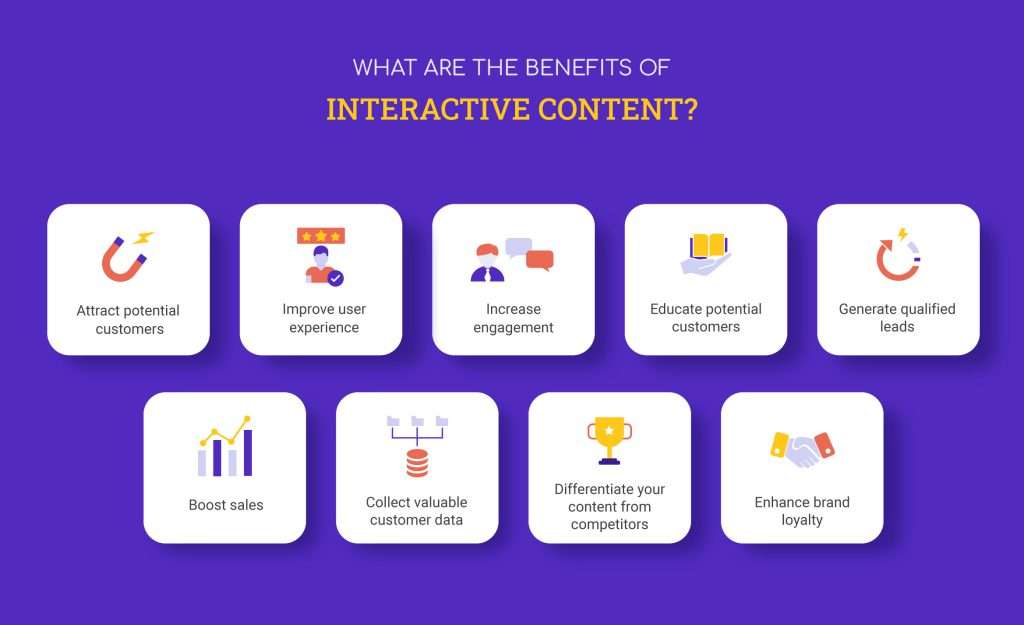
This highlights the need for content marketing KPIs that track user interaction and gather audience insights.
Personalization is Key
Personalization allows you to tailor your content to specific audience segments. This can significantly improve engagement and conversion rates. As personalization becomes more prevalent, tracking KPIs that measure the effectiveness of your targeted content strategies becomes crucial.
The Power of Video Marketing
Video content continues to dominate user attention. According to HubSpot, 92% of marketers accept that video is essential in their marketing strategy.
Marketers who leverage video effectively see higher engagement and conversions. In 2024, tracking video-specific metrics like watch time and completion rates becomes even more important for understanding video content performance.
The Evolving Social Media Algorithms
Social media platforms constantly update their algorithms, making it harder for organic content to reach a wide audience. This necessitates exploring broad social advertising strategies alongside organic reach metrics. Tracking organic and paid social media KPIs provides a more holistic view of your content performance.
Top 9 Content Marketing KPIs to Track in 2024
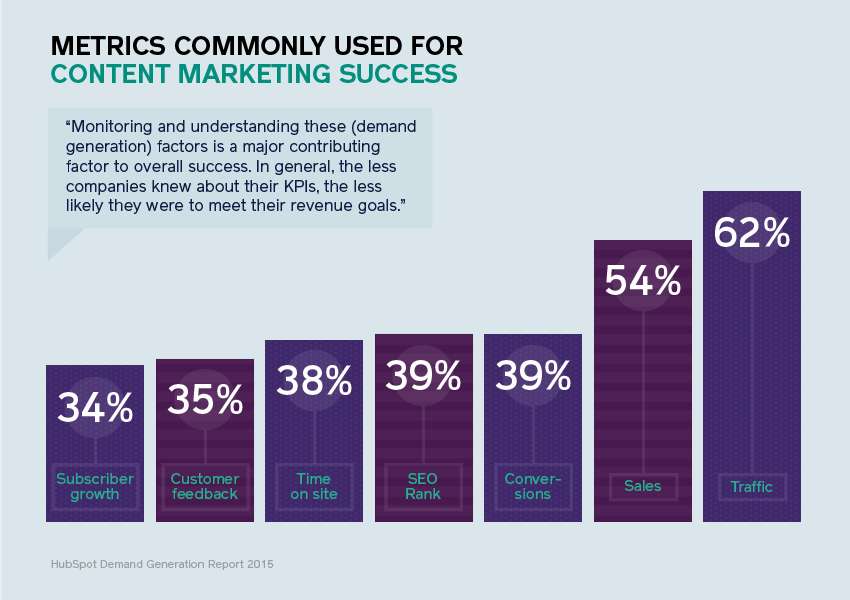
A. Engagement KPIs
Engagement is the key to successful content marketing. It tells you how well your content resonates with your audience and keeps them returning for more.
Here are three crucial content marketing KPIs for gauging engagement in 2024:
1. Website Traffic & User Engagement Metrics
Website traffic is a good starting point, but it doesn’t tell the whole story. In 2024, focus on content marketing metrics that go deeper, like:
Bounce Rate: This measures the percentage of visitors who leave your website after viewing only one page. A high bounce rate indicates that your content might not capture attention or address user needs. According to a report, the average Bounce Rate ranges from 41% to 51%.

- Time on Site: This shows how much time visitors spend on your website after landing. Increased time on site suggests your content is engaging and informative.
- Formula: Time on Site = Total Duration of all Sessions / Total Number of Sessions
- Pages per Session: This indicates how many pages a visitor views on average. A higher number suggests your content sparks user interest and encourages them to explore further.
- Pages Per Session Formula: Count(Total Page Views) / Count(Total Sessions)
Tracking these metrics alongside website traffic gives you a clearer picture of how your content truly engages your audience.
2. Social Media Engagement
Social media platforms are powerful tools for content promotion and audience interaction. Track the following content marketing metrics to measure social media engagement:
- Comments & Mentions: Comments and brand mentions show your content sparks conversations and keeps your brand top-of-mind. Respond to comments promptly to foster a sense of community.
- Likes & Reactions: While likes and reactions can be vanity metrics, they still offer some insight into audience sentiment towards your content.
By monitoring these metrics, you can understand how well your content resonates with your social media audience and adapt your strategy for better engagement.
3. Content Shares & Saves
Beyond social media, track how often your content is shared and saved directly from your website or through email marketing. This indicates users find your content valuable enough to keep for future reference or share with their network. High shares and saves suggest your content addresses a genuine need within your audience.

Focusing on these content marketing engagement KPIs can give you valuable insights into how well your content connects with your audience and help you make informed decisions to improve its effectiveness. Remember, engaged users are more likely to convert into leads and ultimately become loyal customers.
B. Conversion & Lead Generation KPIs
The ultimate goal of most content marketing efforts is to generate leads and convert them into paying customers.
Here are two crucial content marketing KPIs to measure the success of your content in driving conversions and lead generation:
4. Lead Generation Rate
This metric shows how effectively your content attracts potential customers. It’s calculated by dividing the number of new leads generated by your content by the total number of visitors to your website or landing pages.
Here’s how to improve your lead generation rate:
- Include a clear call to action (CTA): Tell your audience what you want them to do after consuming your content. Offer valuable gated content like ebooks or white papers in exchange for contact information.
- Optimize your landing pages: Ensure your landing pages are user-friendly and provide a seamless experience for converting visitors into leads.
- Promote content through targeted channels: Distribute your content on platforms where your ideal audience spends time.
Tracking your lead generation rate and implementing these strategies can increase the number of leads your content generates, boosting your content marketing ROI (return on investment).
5. Conversion Rate
This content marketing metric measures the percentage of visitors who take a desired action after consuming your content, such as purchasing, signing up for a newsletter, or requesting a demo.
Formula: (Total number of Conversions / Total number of Clicks) x 100
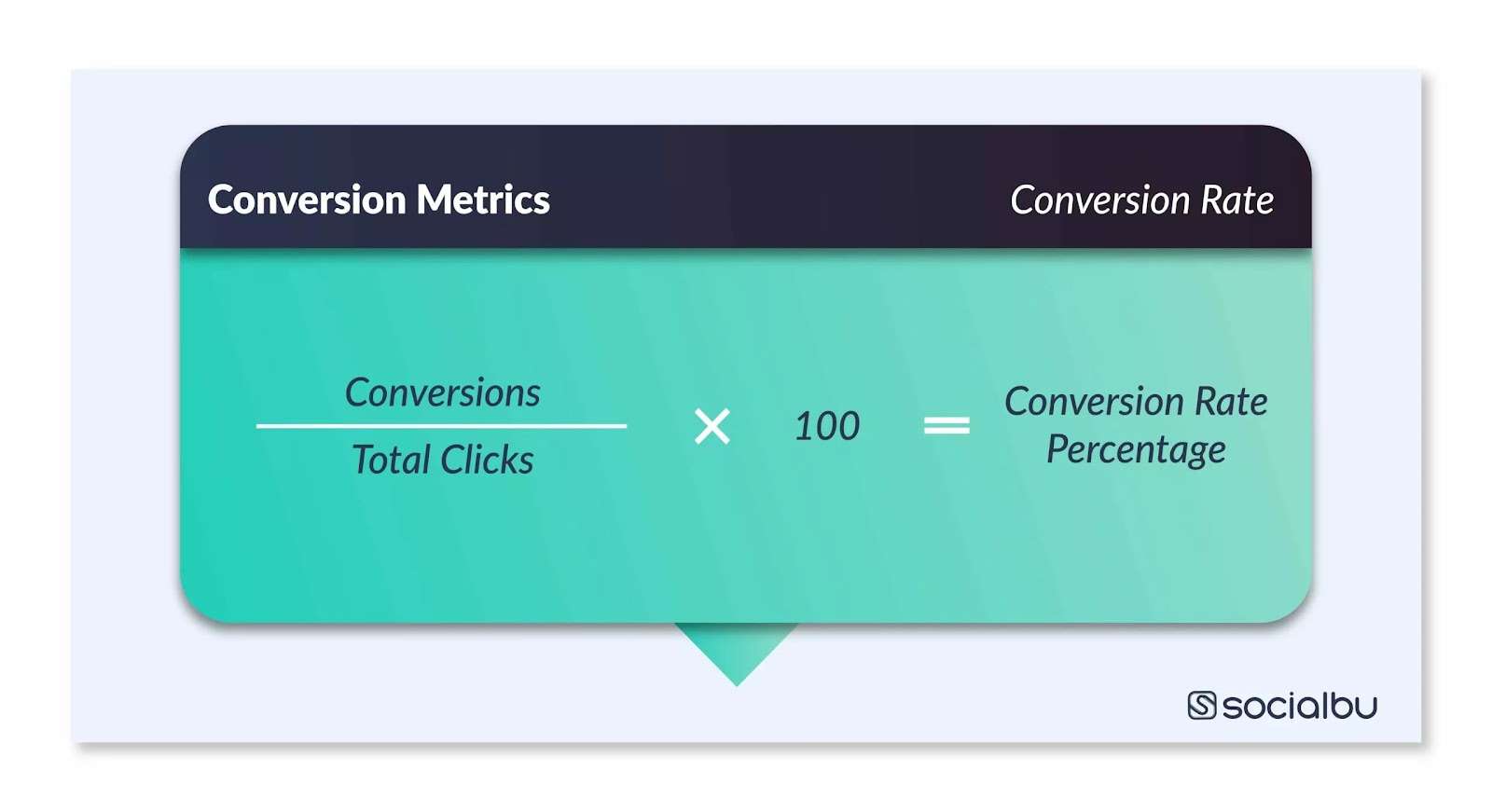
Here’s how to optimize your content for higher conversion rates:
- Align your content with your sales funnel: Create content that caters to different stages of the buyer’s journey, nurturing leads toward conversion.
- Track conversions specific to your content: Use UTM parameters or website analytics tools to understand which content pieces drive the most conversions.
- A/B test different CTAs and content formats: Experiment with different call-to-action copy and content formats to see what resonates best with your audience.
So, by monitoring your conversion rate and implementing these strategies, you can optimize your content to drive more valuable actions from your audience, ultimately contributing to your content marketing success.
C. Brand Awareness & Reach KPIs
Brand awareness is crucial for establishing yourself as a thought leader in your industry. Here are three key content marketing KPIs to track how effectively your content is expanding your brand reach:
6. Brand Search Volume
This metric shows how often your brand name is searched for online. An increase in brand search volume indicates your content marketing efforts are raising brand awareness and driving users to learn more about you.
Here are some ways to improve brand search volume:
- Create high-quality, informative content: Content that establishes you as an expert in your field will naturally attract organic searches.
- Optimize your website and content for search engines: Implement search engine optimization (SEO) best practices to improve your content’s visibility in search results.
- Encourage brand mentions and backlinks: Build relationships with other industry influencers and encourage them to mention your brand or link back to your content.
Hence, monitoring brand search volume and implementing these strategies will ensure that your content effectively positions your brand as a trusted resource within your target audience.
7. Website Traffic Sources
Understanding where your website traffic comes from provides valuable insights into your content’s reach.
Here’s what to analyze:
- Organic Traffic: This traffic comes from users who find your website through search engines. High organic traffic indicates your content marketing efforts drive valuable, targeted site visitors.
- Referral Traffic: This traffic comes from other websites linking to your content. Increased referral traffic suggests your content is valuable enough for others to share with their audience.
- Direct Traffic: Users who type your website address directly into their browser contribute to direct traffic. While this can indicate brand awareness, explore other channels to broaden your reach.
Tracking website traffic sources and focusing on strategies that increase organic and referral traffic can ensure your content reaches a broader audience and attracts high-quality visitors.
8. Social Media Reach
Social media platforms play a crucial part in amplifying your content’s reach. Here’s what to consider:
- Organic Reach: This refers to the number of unique users who see your content without paid promotion. Increased organic reach indicates your content resonates with your audience and encourages them to share it further.
- Paid Reach: It measures how many users have seen your ad content/advertisement. Paid social media advertising can significantly expand your reach beyond your existing followers. Consider paid strategies when targeting specific demographics or promoting key content pieces.
Formula: Paid Reach = Total Impressions / Click-Through Rate (CTR)
Monitoring organic and paid social media, reach helps you understand how effectively your content spreads brand awareness on social media platforms. However, combining organic and paid strategies can maximize your content’s reach and brand visibility.
D. ROI-Focused KPI
While brand awareness and engagement are essential, you want your content marketing efforts to contribute to your business goals. Here’s a crucial content marketing ROI (return on investment) KPI to demonstrate the financial impact of your content:
9. Customer Lifetime Value (CLTV)
This metric estimates the total revenue a customer generates for your business over their entire relationship.

Content marketing can positively influence CLTV by:
- Nurturing leads: Valuable content that educates potential customers and builds trust and loyalty, which can lead to higher purchase values and repeat business.
- Improving customer satisfaction: Content that addresses customer needs and pain points fosters positive brand experiences, encouraging customers to stay engaged with your brand for longer.
- Driving upsells and cross-sells: Informative content can educate customers about your entire product or service range, potentially leading them to purchase additional offerings.
Tracking CLTV alongside your content marketing efforts will give you a clearer picture of how your content contributes to long-term customer value. Consider using surveys or customer relationship management (CRM) tools to gather data on customer behavior and spending habits.
Remember, content marketing isn’t always about immediate conversions. High-quality content that builds trust and educates your audience can significantly impact customer lifetime value, ultimately boosting your content marketing ROI.
Actionable Tips for Tracking & Improving KPIs
Now that you understand the key content marketing KPIs to track in 2024, here are some practical steps to put your knowledge into action:
1. Setting Up & Tracking KPIs
Here’s how to set up and track the right KPIs:
Choose the Right Tools
Numerous free and paid analytics tools can help you track your chosen KPIs. Popular options include Google Analytics and social media analytics platforms (e.g., Facebook Insights and Twitter Analytics).
Establish a Tracking Cadence
Decide how often you’ll monitor your KPIs. Weekly or bi-weekly tracking allows you to identify trends and make adjustments quickly.
Set Realistic Goals
Don’t aim for overnight success. Set achievable goals for your KPIs based on your industry benchmarks and historical data.
2. Analyzing & Improving Your Content Marketing KPIs
Here’s how to do that:
Identify Areas for Improvement
Analyze your data to see which KPIs are lagging. For example, a high bounce rate might indicate your content isn’t addressing user needs.
Refine your Content Strategy
Refine your content strategy based on your data insights. This might involve creating different content formats, targeting specific audience segments, or optimizing your content for better SEO performance.
A/B Test Different Elements
Experiment with headlines, CTAs, and content formats to see what resonates best with your audience. A/B testing lets you make data-driven decisions to improve your content marketing ROI.
Though content marketing KPIs are valuable aspects of your strategy, they’re only effective if you use them to inform and refine your strategy. By consistently tracking and analyzing your data, you can identify what’s working and what’s not. This will allow you to optimize your content marketing efforts continuously for maximum impact.
Bonus Tip: For B2B content marketing, consider including industry-specific KPIs like website traffic from relevant business domains or lead generation from high-value target accounts. However, the core KPIs mentioned earlier (engagement, conversion, brand awareness) also remain crucial for success.
Wrap Up
In today’s dynamic marketing place, tracking the right content marketing KPIs in 2024 is essential for measuring success and optimizing your strategy. By focusing on engagement, conversion, brand awareness, and even ROI, you gain valuable insights to refine your content and achieve your marketing goals. Remember, consistent tracking and analysis are key to maximizing your content’s impact.
SocialBu is also an all-in-one social media management tool that allows you to track all your social media metrics and KPIs from Twitter, Instagram, Facebook, TikTok, Pinterest, and LinkedIn all in one place and easily create custom reports.
With its help, you can analyze your content strategy and various social media metrics and get comprehensive content performance reports in easy-to-understand charts and graphs to make better decisions.
Sign up for a free trial today!
FAQs
What is the KPI in Content Marketing?
KPIs (key performance indicators) are measurable values that track the effectiveness of your content marketing efforts. They help you understand if your content engages your audience, drives conversions, and achieves your marketing goals.
How to Measure Content in KPIs?
There are various KPIs to measure content marketing success.
- Engagement metrics like website traffic, time on site, and social media shares indicate how well your content resonates with your audience.
- Conversion metrics like lead generation and sales track if your content drives valuable actions.
- Brand awareness KPIs, such as brand search volume and website traffic sources, show how effectively your content expands your reach.
What are KPIs in Social Media Marketing?
Social media marketing KPIs focus on measuring your performance on social media platforms. They include metrics like follower growth, engagement (likes, comments, shares), and reach (how many people see your content). These KPIs help you understand how well your social media content resonates with your audience and expands your brand awareness.
What are KPIs in Digital Marketing?
Digital marketing KPIs encompass a broad range of metrics used to track the effectiveness of online marketing efforts. They can include website traffic, conversion rates, email marketing engagement, and social media KPIs. These metrics help you understand how well your digital marketing campaigns perform and achieve your overall marketing goals.
How to Measure Content Marketing Success?
Content marketing success is measured by tracking relevant KPIs that align with your marketing goals. By monitoring engagement, conversion, brand awareness, and ROI metrics, you can gain valuable insights into how well your content is performing and identify areas for improvement.
What are KPIs for Branded Content?
Branded content KPIs focus on measuring the effectiveness of your branded content campaigns. They help you understand if your branded content is achieving its objectives of building brand awareness, fostering positive brand perception, and engaging your target audience.
